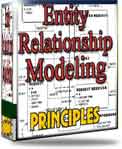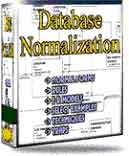 |
||
|
|
Collaborative Project ManagementI Collaborative Project Management - BackgroundThose were the golden days of project management: When the entire team was closeted in a single room (okay, perhaps in one building), all of them speaking the same language and drinking from the same water fountain and knowing each other on first-name basis. In fact, key decisions about a particular deliverable would get taken at the water fountain itself, amidst informal cameraderie and tacit knowledge sharing. Certain bonhomie would pervade the atmosphere, and the progress of the project would be detailed on the beautiful, colorful Gantt chart for everyone to see and admire. Impromptu meetings at the team level and project level were the order of the day, and tracking projects was such an easy task. The competition on the other side of the road didn’t have any different business model either, and everyone faced the same share of slippages, over-budgets and failures. Those were the golden days. And then came along people such as Jack Welch, chairman of GE, and people of his like, to shatter the project manager’s utopia. In one stroke, project management as a paradigm got redefined: Collaborative Project Management: A project’s inputs and outputs were not the only important entities; the “process” by which it would get carried out became important, too. The revolution of internet brought in its wake low-cost development teams that were seated in different locations on different continents and different time-zones, and could be managed by new web based project management software. Homogenity gave way to heterogenity in terms of language, dress, time of work, cultures … and the term “managing people” came to acquire a different spin altogether. The mad race to reach the market earlier than the others with a top-notch product/service, coupled with reducing project costs by getting cheaper and yet more productive labor, has boosted the trend for international mergers and outsourcing. Members of a typical project do not come for their daily high of chit-chat at the water fountain. Instead they interact through video streams broadcast over high-speed optical fibers laid on ocean floors across the earth. This, then, is collaborative project management for you. II Collaborative project management - the basicsThe difference between traditional and collaborative project management is one of distance. In the latter case, to-do tasks are not handed out to individual team members face-to-face: they are sent on the email or on shared message-boards, or better still, through sophisticated softwares that manage repository of messages. Unlike traditional project management styles, the collaborative project management scenario focuses on not only using PM as a reporting tool (such as Gantt chart/PERT chart generating), but also works on the following dimensions: 1 Gathering of related artifacts such as decision rationales becomes a significant dimension to project management. Any and all information that is generated during brain-storming sessions are collected in a permanent repository. Later, when any changes are proposed to be made, earlier decision rationale can be studied from the repository to determine the wisdom behind the original stand in the first place. This repository can be made available to all team members concerned, so that there is greater appreciation of why they are doing what they are doing. This deliberate and conscious conversion of “even tacit knowledge and tacit communication” into “explicit representation of project information” is what ensures success for collaborative project management. This attention to fine detail: every project team recording each and every step (phase X followed by phase Y), context (names of participants of a task, assignment begin -> due -> actual-finished date) and rationale (why one tool or methodology was chosen over the other), including automatic notification of task status changes, and providing a forum for members to discuss and comment on one another’s work; is what ultimately leads to effective communication. Note, here, that this explicit representation was implicit and often given less importance in a traditional project management scenario. 2 During the life of the project, ongoing processes are dynamic in nature. Only in the case of very simple or recurring projects, do inputs and outputs change. In today’s complex scenarios, business environments of stake holders can be altered, at times dramatically. Inputs may change, outputs may be turned inside out, technology and platforms to be used may undergo some further fine-tuning, and even resources originally committed to the project manager may deplete (in terms of time, money, personnel, infrastructure, and so on). Such situations are faced by the manager de-facto when they are in charge of collaborative projects, and they have to continuously gauge the impact of such changes on the progress of the project - now and in the future. This makes on-the-toes project tracking a very important dimension. 3 Associated with stakeholders’ business dynamics and their impact on the project’s well-being is the dimension of future-oriented planning; briefly alluded to above. III Collaborative Project Management - End wordDue to the difference in time-zones of project teams: one team located at Bangalore, another in Tokyo and yet another in Sydney, an efficient project manager is one that schedules their tasks such that the entire project “chases the sun”. In medieval British lore, it was said that “for the British Empire, the sun never sets”, because they had colonies to be managed everywhere on the earth. The same is true with collaborative project management. Finally, an efficient project manager is one who can go to bed at the right time, sleep soundly, and get up at the right time, with the full confidence that things will take care of themselves while he/she is snoring. Return to Software Project Management
|
Exclusive interviews with:
Free eBookSubscribe to my newsletter and get my ebook on Entity Relationship Modeling Principles as a free gift: What visitors say...
"I just stumbled accross your site looking for some normalization theory and I have to say it is fantastic.
Read more
Testimonials
I have been in the database field for 10+ years and I have never before come across such a useful site. Thank you for taking the time to put this site together." Mike, USA |
|
Theory & Practice DB Normalization Analysis Phase Database Keys DB Glossary Appl.Architecture Oracle DBA MySQL DBA SQL Server DBA Install Oracle Install SQL Server Proj.Management Oracle Constraint Programming Tips Database Normalization eBook: |
||
|
Copyright © www.databasedesign-resource.com /
All rights reserved. All information contained on this website is for informational purposes only. Disclaimer: www.databasedesign-resource.com does not warrant any company, product, service or any content contained herein. Return to top
The name Oracle is a trademark of Oracle Corporation. |
||